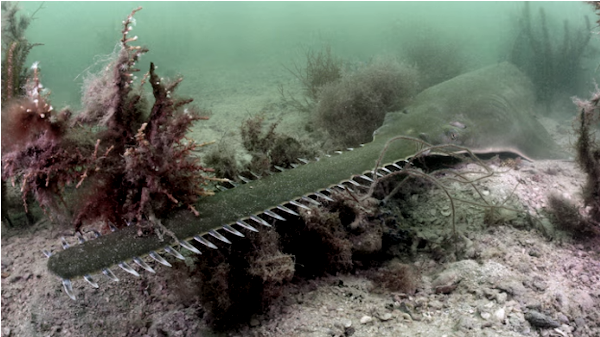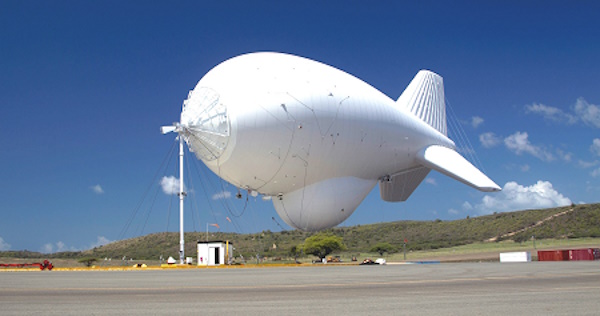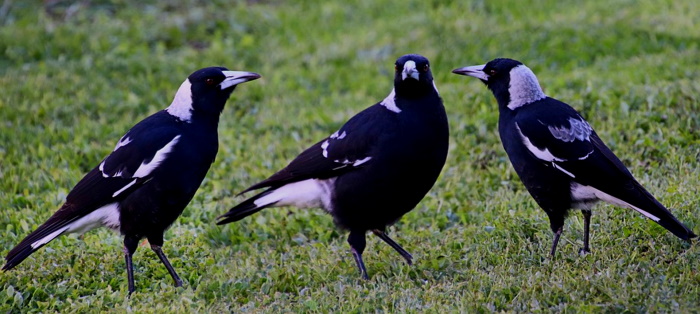by Dr. Joseph Mercola, mercola.com
June 20, 2020
STORY AT-A-GLANCE
- Bats are ecological superheroes. They feed on agricultural pests and pollinate many popular food crops including bananas, cacao, mangos, peaches and figs
- Did you know that without bats, we wouldn’t have tequila? Bats pollinate agave, the primary ingredient in tequila, which blooms at night in the Desert Southwest
- “Bats — Unsung Heroes” highlights several hotspots for bats, including the South Congress bridge in Austin, Texas, and Bracken Cave, near San Antonio, Texas
- About 20 million bats live in Bracken Cave. Each night they eat 147 tons of insects, most of which are agricultural pests
- Bats save farmers in the U.S. up to $53 billion per year
Bats are sometimes feared and greatly misunderstood. They’ve been particularly vilified in the wake of the COVID-19 pandemic, as many are falsely pushing the narrative that bats, and the sale of bats and other animals in wet markets, are to blame for the outbreak. We now have proof that’s simply not true. For more information, be sure to check out tomorrow’s interview with virologist and molecular biologist Jonathan Latham, Ph.D.
In that interview, he presents evidence showing SARS-CoV-2 is highly unlikely to have a natural origin, and stresses that we must not blame the wildlife trade. It’s merely a ruse to cover up compelling evidence showing it’s a lab-created virus that somehow escaped the confines of the laboratory.
So, please, leave bats alone, both figuratively and literally. Avoid them, don’t eat them, don’t hold them — and let scientists know we do not want them to harvest them for culturing and manufacturing new viruses.
What many people don’t realize is that bats serve an important purpose, both to humans and the environment. Bats are ecological superheroes that pollinate many of our favorite foods. They also feed on agricultural pests that damage food crops, saving farmers hundreds of thousands (if not millions) of dollars each year.
The featured film, “Growing a Greener World: Bats — Unsung Heroes,” explores the benefits bats have on our environment, their role in food production, and what some scientists are doing to protect this important species.
The film starts out in San Antonio, Texas, at Bracken Cave, a major tourist attraction that is home to the world’s largest bat colony. The cave provides shelter for about 15 to 20 million Mexican free-tailed bats, according to the film. Each night at sunset during the warmer months, the bats gracefully fly out of the cave in masses to begin their nightly hunt.
Bracken Cave was purchased by Bat Conservation International (BCI) in 1991. It now owns nearly 1,500 acres of former ranchland surrounding the cave, which is in the process of being restored to its natural state.
The land lost some of its original plant and animal diversity when it was being utilized for other purposes such as ranching. But thanks to the conservation work done by BCI, the area is now also home to many bird species, including endangered golden-cheeked warblers.1
Bats Are the Only True Flying Mammal
In the film, Fran Hutchins, director of Bracken Cave Preserve, reveals that bats are the only true flying mammal. Mexican free-tailed bats weigh just half an ounce, or the equivalent of holding 50 cents in your hand, says Hutchins.
Despite being in the same genetic class as humans, bats are often lumped in with animals like snakes and sharks, some of the creatures we fear the most. But once you start to take a closer look at bats and their unique habits, it’s clear there is nothing to fear about these beneficial animals.
There are many fun facts about bats you may not know. For example, despite what you may have heard, bats are not blind. They can see very well. They also have excellent flying abilities and an impressive range of motion.
Bats can fly up to 50 to 60 miles per hour, and travel distances of up to 30 to 50 miles in radius before returning back to their home. Bats are more maneuverable than birds. They use a combination of echolocation and sense receptors that allow them to easily navigate through the night sky.
Their echolocation abilities work by emitting a sound out of their mouth, which bounces off an object. When it returns, it is received and processed by their ears and other facial features. This echolocation technique is what helps bats hunt for food.
Bats emit sounds slowly and repetitively, as they navigate through the environment. However, when bats home in on an insect, the sound increases in frequency right up until they reach their prey. They then use their wings to snatch up the insect before eating it.
Without Bats, We Wouldn’t Have Tequila
Bats as a species are incredibly diverse. There are an estimated 1,400 species of bats worldwide. They live on various parts of the planet and range in size. For example, the Kitti’s hog-nosed bat, also called the Bumblebee Bat, weighs less than a penny, making it the world’s smallest mammal next to the flying fox, according to the U.S. Department of the Interior.2
While bats are expert hunters, they are also important pollinators. Just like birds, butterflies and bees, bats pollinate many important food crops, but because they do so at night under the cover of darkness, they don’t get as much recognition.
More than 300 species of food-producing plants depend on bats for pollination. Some of these include guavas, bananas, mangos, figs, dates, cashews and peaches. Bats also pollinate other flowering plants including agave, the key ingredient in tequila.
Without bats, we would not have tequila. Bats are the main pollinator of agave, which blooms at night in Desert Southwest, according to the film. Agave plants are a major food source for bats. Unfortunately, in an effort to maximize profits, some big-time tequila producers are cutting down agave stalks before they have a chance to flower.
This is a big problem for bats. Luckily, some producers are being a little more responsible in the way they grow agave and produce tequila. They are allowing some of the agave plants to flower so that bats have a food source along their migratory pathway.
Some sustainable tequila producers have even branded their products “bat-friendly.” Bat-friendly tequila can be found at various specialty bars and restaurants around the U.S., including San Antonio’s Esquire Tavern, which serves a spicy cocktail called the “Batman of Mexico.” It’s made with Tequila Ocho, which can be found at some U.S. liquor stores for about $45 a bottle.3
Austin’s South Congress Bridge Is Home to 1.5 Million Bats
The next stop in the film is Austin, Texas. The capital city is best known for its laid-back atmosphere, tasty tacos and its “Keep Austin Weird” slogan. It’s also known for its bats, which reside under the South Congress Bridge.
The bridge was constructed using cast-in-place concrete to expedite the construction. Little did they know the design would create tiny spaces underneath the bridge that serve as the perfect bat house.
An estimated 1.5 million Mexican free-tailed bats migrate north to Austin and call the bridge home during the warmer months of March through October.4 Like they do at the Bracken Cave, millions of bats descend from under the bridge at sunset, swirling in a mesmerizing tornado-like shape.
Mylea Bayless, senior director of Networks & Partnerships Bat Conservation International, says in the film that the bats stay together like a school of fish in order to avoid predators. They fly downstream along the tree line out to the corn and cotton fields where they primarily feed on agricultural pests. The viewing draws thousands of people who line up along the bridge each night, waiting to watch the bats.
Bats Save Organic Pecan Farm in Texas
While bats get a lot of recognition in some of Texas’ largest cities, they are equally as honored in the Texas Hill Country. The featured film visits John Byrd, a pecan orchardist and owner of King’s Crossing Farm, an organic farm located in San Saba, Texas.
The 109-acre farm was established by Byrd’s grandfather in 1944, who was also one of the founders of the Texas Pecan Growers Association. Texas is one of few states where pecans are indigenous.5
Byrd’s 1,200 pecan trees are part of the family legacy. But they are also an attraction for pests. In the film, Byrd explains that the biggest pest threat to his pecans is the casebearer moth, which can lay 100 eggs at a time. Each egg makes a little caterpillar that goes into a pecan nut and kills it.
If all 100 eggs are able to successfully make their way into a cluster of pecans, they can kill 100 pecans, says Byrd. That’s about 1 pound, which costs about $1.50. So, for every moth, the farm stands to lose $1.50. Byrd uses organic growing methods on his farm,6 which means pesticides are not an option for dealing with the moths.
Bats Are Nature’s Exterminator
“I have 400-year-old pecan trees that have been doing well without chemicals or people, and they produce pecans,” he says. “There is a way to do it without pesticides. I want to promote life, not death, in my orchards.”
In an effort to deal with the moths naturally, Byrd started building bat houses in hopes of attracting the animals to his orchard. He started out with a small bat house, which was quickly filled with bats. He then built a bat house three times the size as the first. It too filled almost immediately with bats.
Finally, he built one of the largest bat houses available, which can hold up to 30,000 bats. It took a while longer, but it too, eventually became full. Byrd says the large bat house now holds about 20,000 bats. They’re doing their job, too, he says. DNA analysis found the bats were in fact eating the casebearer moths. Byrd now has fewer pests and more pecans.
Bats are one of nature’s best exterminators. The bats that live in Bracken Cave outside of San Antonio eat an estimated 147 tons of insects per night, most of which are agricultural pests, according to the film. As a result, bats save farmers in the Texas Hill County about $750,000 a year in crop damage and pesticides. In the U.S, bats are estimated to save farmers anywhere from $3.7 billion to $53 billion per year.7
Bats Are Threatened Worldwide
Despite their importance, bats worldwide are at risk for a number of reasons including habitat loss, climate change, disease, deforestation and the bushmeat trade.8 Scientists report a loss of 50% of the world’s insects since 1970,9 a disastrous estimation that’s predicted to affect all types of wildlife, including bats.
Another major threat to bats is white-nose syndrome, a fungal disease that eats away the tissue of North American bats. The pathogen gets its name from the appearance of a fuzzy white material that grows on the bats’ snout, ears, wings or feet.
The pathogen prefers cold temperatures, which means bats are most susceptible when they are hibernating and their body temperature is reduced, explains Chris Cornelison, Ph.D., a research assistant professor at Kennesaw State University.
“From a wildlife disease standpoint, we’re experiencing some of the most precipitous, severe-associated declines of wildlife that have ever been recorded,” says Cornelison in the film. “In some of the worst cases, we’ve observed over 99% declines in those populations.”
The good news is that scientists are working hard on solutions. One solution involves the use of naturally occurring VOCs that can be used in conjunction with a nebulizer to produce an aerosol volatilized gas to spray on the bats. This represses the growth of the fungus while they hibernate.
This is sometimes challenging, as bats hibernate in caves that are inaccessible to humans. For example, at the Black Diamond Tunnel in North Georgia, scientists had to develop the infrastructure to mount a nebulizer on a boat in order to send it autonomously into the cave to distribute the antifungal gas.
Want to Help Protect Bats? Here Are Some Things You Can Do
As you can see, bats are incredibly important for maintaining a healthy ecosystem. If you want to help protect bats, one thing you can do is to plant an organic, pesticide-free garden with night-scented flowers. If you are able, it’s also helpful to leave dead and dying trees, as these spaces create perfect roosting sites for bats.10
You can also put up a bat house. Click here for information on where to purchase a bat house or build one yourself.




